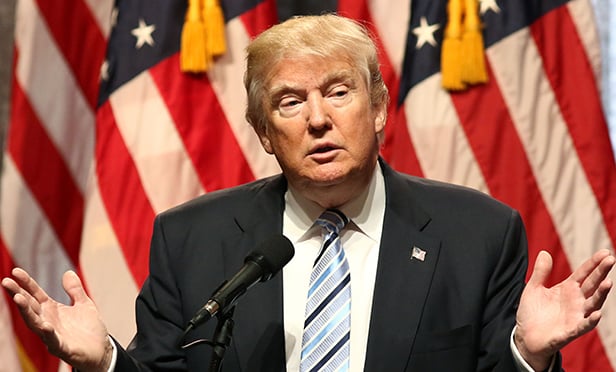As the yuan plumbs new lows against the dollar, China's currency is still strengthening against its peers.
That's posing a dilemma for the nation's policy makers as they seek to arrest a plunge in exports and shore up an economy growing at its slowest pace since 1990. China's exchange rate climbed 0.6% against a trade-weighted basket last week, its biggest advance in three months, even as it slumped 0.8% versus the greenback to a six-year low. Against the euro and the South Korean won, the yuan gained at least 0.7%.
With the latest data showing Chinese outbound shipments sank 10% last month from a year earlier, the case for a weaker currency is growing. The quandary for policy makers is how to allow a quicker pace of depreciation against the dollar without sparking the size of capital outflows that occurred in January this year and August 2015.
“Given the current strong U.S. dollar environment, it would be difficult to see the basket weaken,” said Perry Kojodjojo, a strategist at Deutsche Bank in Hong Kong. “At the end of the day, if you want exports to be more competitive because of your currency, then you need the currency to be weak, but the problem is that would create systemic risks, which the PBOC authorities would likely feel uncomfortable with.”
Chinese policy makers had it easier earlier in the year, when fading bets for higher U.S. interest rates spurred a weaker dollar. By allowing the yuan to rise less against the greenback than its peers, the CFETS RMB Index of 13 trade partners' currencies fell steadily without causing alarm. While the gauge is still down 6.2% this year, it's remained above its two-year low of around 94 since Aug. 23.
The risks of a faster depreciation were laid bare in August last year, when policy makers unexpectedly devalued the currency. After a more than 50% surge in the real effective exchange rate over the past decade, there was a compelling case to weaken the yuan. The result, however, was panic across global markets and record capital outflows, which prompted the government to deplete its foreign-exchange reserves to stabilize the exchange rate and tighten controls on outflows.
The yuan fell 0.2% to 6.73 per dollar at 5:01 p.m. in Shanghai, while dropping 0.1% against the trade-weighted index.
Fiona Lim, a senior currency strategist at Malayan Banking Bhd. in Singapore, says 94 could be the currency basket's low for now, with a slowdown in exports in other countries suggesting a weaker yuan may not be of much help.
“Exports remained sub-par for China and for most other parts of the world,” she said. “Hence, the benefits of depreciating the yuan on a trade-weighted basis is small and would be largely outweighed by a potential rise in capital outflows should markets expect the yuan to weaken substantially.”
Still, the slide in exports will add to pressure for policy makers to allow quicker depreciation, said Deutsche's Kojodjojo.
“Given the weaker data, China is likely to try to correct some of the renminbi over-valuation,” he said, using an alternative name for the currency.
Copyright 2018 Bloomberg. All rights reserved. This material may not be published, broadcast, rewritten, or redistributed.
Complete your profile to continue reading and get FREE access to Treasury & Risk, part of your ALM digital membership.
Your access to unlimited Treasury & Risk content isn’t changing.
Once you are an ALM digital member, you’ll receive:
- Thought leadership on regulatory changes, economic trends, corporate success stories, and tactical solutions for treasurers, CFOs, risk managers, controllers, and other finance professionals
- Informative weekly newsletter featuring news, analysis, real-world case studies, and other critical content
- Educational webcasts, white papers, and ebooks from industry thought leaders
- Critical coverage of the employee benefits and financial advisory markets on our other ALM sites, PropertyCasualty360 and ThinkAdvisor
Already have an account? Sign In Now
*May exclude premium content© 2024 ALM Global, LLC, All Rights Reserved. Request academic re-use from www.copyright.com. All other uses, submit a request to [email protected]. For more information visit Asset & Logo Licensing.




